 Long and long ago there was a young girl that people would call Aiyaiyesh, which roughly would translate into English as “stupid.” Even today, if you don’t listen to your elders, people will say, “Ah, you’re so aiyaiyesh.”
Long and long ago there was a young girl that people would call Aiyaiyesh, which roughly would translate into English as “stupid.” Even today, if you don’t listen to your elders, people will say, “Ah, you’re so aiyaiyesh.”
Other kids her age would help their elders pick berries. 
But not the girl who was aiyaiyesh…she would just sit underneath the cedar tree, watching the world go by.
 Other kids her age would help their elders tan deer hides.
Other kids her age would help their elders tan deer hides.
But not the girl who was aiyaiyesh…she would just sit underneath the cedar tree, watching the world go by.

Other kids her age would help their elders dig roots. But not the girl who was aiyaiyesh…she would just sit underneath the cedar tree, watching the world go by…
 Other kids her age would gather cedar bark on the hottest days of the year to help their elders. But not the girl who was aiyaiyesh…she would just sit underneath the cedar tree, watching the world go by.
Other kids her age would gather cedar bark on the hottest days of the year to help their elders. But not the girl who was aiyaiyesh…she would just sit underneath the cedar tree, watching the world go by.
 Finally, one day, the cedar tree couldn’t take it anymore and said, “Ah, you are so aiyaiyesh. All you ever do is sit underneath me. Now you watch. I’m going to show you how to do something.”
Finally, one day, the cedar tree couldn’t take it anymore and said, “Ah, you are so aiyaiyesh. All you ever do is sit underneath me. Now you watch. I’m going to show you how to do something.”
And so it was the cedar tree showed her how to take the strong roots of the cedar and coil them around, sewing them together into a circle.  Now circles are very sacred to most Native people. We’re taught that the world is a circle…when the wind moves in its strongest power, it moves in a circle. In our ceremonies, when we pray, we turn in a circle because we are taught when you turn in a circle, one of your sins falls off.
Now circles are very sacred to most Native people. We’re taught that the world is a circle…when the wind moves in its strongest power, it moves in a circle. In our ceremonies, when we pray, we turn in a circle because we are taught when you turn in a circle, one of your sins falls off.
 As she sewed the circles together, she created the very first hard root cedar basket. This is a very important thing in the Pacific Northwest. Not only is it traditionally used to hold berries, and other foods, but the baskets were so well made, they would hold water. In fact one proof of moving into adulthood was to make four baskets which would then as a test, be dipped into water. If they would hold the water, then the basket maker was recognized as an adult. The baskets would then be given away to train the young person to always be generous. This type of basket was also used for cooking.
As she sewed the circles together, she created the very first hard root cedar basket. This is a very important thing in the Pacific Northwest. Not only is it traditionally used to hold berries, and other foods, but the baskets were so well made, they would hold water. In fact one proof of moving into adulthood was to make four baskets which would then as a test, be dipped into water. If they would hold the water, then the basket maker was recognized as an adult. The baskets would then be given away to train the young person to always be generous. This type of basket was also used for cooking.
 After being filled with water, small rocks that had been heated in a fire would be dropped into the water of the basket. The heat of the rocks would make the water boil, and you could then cook soups and stews.
After being filled with water, small rocks that had been heated in a fire would be dropped into the water of the basket. The heat of the rocks would make the water boil, and you could then cook soups and stews.
But you had to be very careful and keep stirring the hot rocks around or they would stay at in one place and burn a hole through the bottom of your basket  and you’d feel really aiyaiyesh.
and you’d feel really aiyaiyesh.
When she had finished, the cedar tree examined her basket and told her she had done a good job, but she had woven no patterns onto her basket, and a basket was not finished until it had designs.
“But I don’t know any designs,” she cried.
“Ah, you’re so aiyaiyesh,” said the cedar tree. “Start walking—keep your eyes and your ears and your heart open, and you will find all sorts of patterns.”
Just so, the girl began to walk and all the way she was crying. In fact, she was crying so hard, she wasn’t watching where she was going, and almost stepped on Waxpush, the rattlesnake. “What’s the matter with you, almost stepping on innocent people!” the rattlesnake hissed.
“What’s the matter with you, almost stepping on innocent people!” the rattlesnake hissed.
“Oh, I’m so sorry,” she answered, “but the cedar tree told me if I just kept walking, I’d find all sorts of designs for my basket, but I haven’t found a single one.”
“Ah, you’re so aiyaiyesh,” cried the rattlesnake. “Open up your eyes and see—just look at me!”
And sure enough, when she looked—really looked at the rattlesnake, she saw she had a beautiful pattern of diamonds down her shiny back. “Oh, how beautiful you are! What a wonderful pattern!”
“Take it,” said the rattlesnake, “use it for your basket.” And so it was she wove the diamond back patterns into her basket.
When she was done, she was very proud of herself, but eventually she thought, “Well, I can’t just keep using the same pattern over and over again,” and she began to cry once more.
“Why are you crying, little girl?” called someone with a voice like thunder.  She looked up from her tears and saw Patu, the Mountain, was talking to her.
She looked up from her tears and saw Patu, the Mountain, was talking to her.
“Oh, I’m crying because the cedar tree told me if I just kept walking, I would find all sorts of patterns for my baskets, but all I’ve found is just one!”
“Ah, you’re so aiyaiyesh,” called the Mountain. “You look at me—what do you see?” And sure enough, when she looked—really looked at the Mountain she saw that he was really a triangle.
“Oh, what a beautiful pattern you are,” she said.
“Take it—and use it for your basket.”
And so it was she wove the pattern of the Mountain into her basket.
In this miniature basket, you can see how the yellow represents the path the basket maker took in climbing the mountain to gather the materials for the basket.
She was very proud of herself, and as she kept walking, keeping her eyes and ears, and heart open, she saw all sorts of designs.
 The stars came out at night and formed constellations that she used for designs.
The stars came out at night and formed constellations that she used for designs.
Butterflies danced around the flowers and taught her more patterns.
She saw how the leaves of the plants danced with the wind and her heart danced when she realized she had yet another design.
She saw the tracks of little birds. She saw lightning and that gave her another design for her baskets.
She saw the top knot on the little quail and that gave her a design she could use.
 Everywhere she went, in every direction, she found patterns and designs.
Everywhere she went, in every direction, she found patterns and designs.

And when she learned to weave all these designs into her baskets, she returned home to her people and taught them how to put the patterns into baskets.
When she had done that, she wasn’t aiyaiyesh anymore.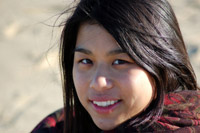
A Sahaptin story, retold by CoyoteCooks
This is one of my favorite stories, and I have used it in getting across the idea of “Learning to See/Seeing to Learn.” As a therapist, I find a lot of people are like the aiyaiyesh girl in the beginning of her journey—they keep using the same pattern (of behavior) over and over again.  Part of their psychological growth comes from discovering that there are all sorts of other patterns (of behavior) around them that they can also use.
Part of their psychological growth comes from discovering that there are all sorts of other patterns (of behavior) around them that they can also use.
After I tell the legend, the first thing I will ask an audience is, “When did she stop being so aiyaiyesh?”
Was it when she learned to make a basket? Was it when she learned how to weave a design into the basket? Was it when she learned to see that patterns and designs were always all around her?
The legend says very specifically she stopped being aiyaiyesh when she was able to share her knowledge with her community. The beginning of the story states she is aiyaiyesh, and gives examples of what others her age would be doing during the four seasons (a cycle) of the year, in giving back to their community. But the girl doesn’t give anything back. She only sits underneath the cedar tree and watches the world go by. Her aiyaiyeshness isn’t about ignorance, but about her interactions and responsibility.
The knowledge of how to make the baskets described in the story was in danger of being lost not long ago. When I used to interview Native elders for our TV program, Native Vision, I would hear them talk about how hard it was to make the baskets. They involved almost a year of preparation—going out during the hottest days of the year to gather cedar bark when the sap would not be next to the surface where it would render the bark useless for basket-making—going into the higher elevations of the mountain to gather bear grass to weave into the basket—preparing alder bark to use as a reddish dye.
When the Native people would take their beautiful baskets into the White towns to trade, the settlers would dismiss them and offer used clothing for trade. I remember Hazel Pete, a respected Chehalis woman who came from generations of basket-makers, explaining to me how her mother told her as a child, “You are better than this. You are better than used and dirty old clothes.” Many stopped making the baskets, and started using buckets and pots obtained from their non-Native neighbors. Towards the last part of the 20th century, there was a revival of basket-making among many Native communities, and basket-making was even being taught in community centers on reservations.
On a spiritual level, this story is related to the Vision Quest, which involves discovering one’s Power. In this case, the young woman would be about at the age of puberty, and her Spirit Power would be the Cedar Tree, which is responsible for helping her become all she can be.
In terms of this article’s recipe, I’m going to start with the assumption you either don’t have a basket that you can use for cooking or if you do, it’s likely to be a family heirloom you probably won’t use for cooking anyway. In the images I used in illustration I included one that shows baskets from California, that are a little out of the Plateau culture of this legend, but it did indicate some cooking baskets so readers won’t think this is something I made up. These Californian baskets would have been used to cook ground acorns with the same technique of dropping small stone heated very hot in a fire into the mixture, and then replacing the stones as they cool off. I’ve had some like this when I was doing a workshop in northern California.

Because the NW traditions focus on soups and stews in the baskets, I decided to do a “Three Sisters Soup.” I was aware of the Three Sisters (Corn, Bean, Squash) from southwestern culture and was pleased to find out much later as an adult that the Three Sisters are also very much part of other Native cultures, including up in the American North East, the homeland of the Six Nations Confederacy. 
The legends say these are our relatives. On a practical level, the corn stalk forms a support for the beans to climb, while the beans attach nitrogen to the soil in a way that benefits the corn. The squash spreads out, helping keep the ground moist, but also discourages other plants (think about what most Americans would call weeds) and the spiny bits of the squash discourage a lot of pests.
If I’m in a hurry, (and it’s one of those weeks) it’s easy to throw together a can of black beans , a can of hominy, and a few cut up zucchini and yellow squash
a can of black beans , a can of hominy, and a few cut up zucchini and yellow squash  into a chicken stock (although I’ve been trying to be as productive as possible lately, so I’ve been freezing pork stock which I’ll use instead). There’s sometimes mention of the Fourth Sibling—the spicy brother Chili, so I’ll toss in enough crushed or ground red chili pepper until I’m satisfied.
into a chicken stock (although I’ve been trying to be as productive as possible lately, so I’ve been freezing pork stock which I’ll use instead). There’s sometimes mention of the Fourth Sibling—the spicy brother Chili, so I’ll toss in enough crushed or ground red chili pepper until I’m satisfied.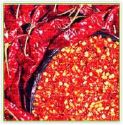
I personally prefer cutting fresh corn off the cob to use, although sometimes I get a craving for hominy.
Depending on who will be sharing dinner, I might cut the fresh corn into segments for those who enjoy the experience of gnawing the corn off. 
This is actually more representative of the Algonquian folks back east. First appearing in English about 1778, “succotash” comes from an American Indian word for beans and maize cooked together. “Msiquatash” was the staple dish of the Narragansett tribe, who lived in what is now Rhode Island. A related Narragansett word, “asquutasquash,” gave us “squash…”(Incidentally, the verb “squash,” meaning “to smash flat,” comes from an entirely different source, the Latin word for “break.”) http://www.word-detective.com/back-m.html
I’ll also throw in a few diced tomatoes and garlic, and salt and pepper to taste. And because it’s been a very busy week, I’ll throw in the meat from the leftover pork that’s been waiting patiently in the fridge. I’m ready to serve within 30 minutes, which includes tossing some rolls in the oven.
 wanted to share in a way I had watched my relatives do–teaching and sharing with others in a non-threatening and entertaining way. It was also an opportunity to give people in the local storytelling community a chance to get a sense of the sort of Stories I would tell when performing. But ultimately, I thought of it as a chance to get something down I would one day show to a publisher.
wanted to share in a way I had watched my relatives do–teaching and sharing with others in a non-threatening and entertaining way. It was also an opportunity to give people in the local storytelling community a chance to get a sense of the sort of Stories I would tell when performing. But ultimately, I thought of it as a chance to get something down I would one day show to a publisher.




















 (Traditional Irish Jackolantern)
(Traditional Irish Jackolantern)














































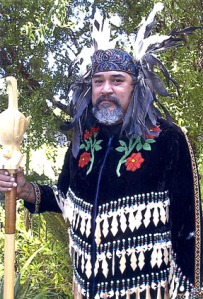


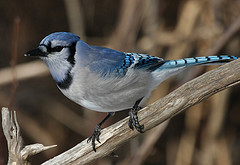
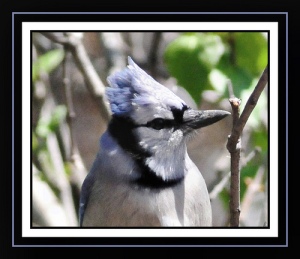
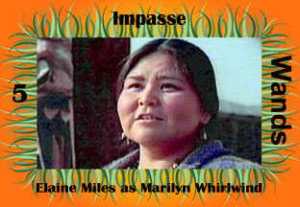
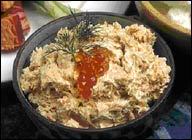
























 Long and long ago there was a young girl that people would call Aiyaiyesh, which roughly would translate into English as “stupid.” Even today, if you don’t listen to your elders, people will say, “Ah, you’re so aiyaiyesh.”
Long and long ago there was a young girl that people would call Aiyaiyesh, which roughly would translate into English as “stupid.” Even today, if you don’t listen to your elders, people will say, “Ah, you’re so aiyaiyesh.”
 Other kids her age would help their elders tan deer hides.
Other kids her age would help their elders tan deer hides. 
 Other kids her age would gather cedar bark on the hottest days of the year to help their elders. But not the girl who was aiyaiyesh…she would just sit underneath the cedar tree, watching the world go by.
Other kids her age would gather cedar bark on the hottest days of the year to help their elders. But not the girl who was aiyaiyesh…she would just sit underneath the cedar tree, watching the world go by. Finally, one day, the cedar tree couldn’t take it anymore and said, “Ah, you are so aiyaiyesh. All you ever do is sit underneath me. Now you watch. I’m going to show you how to do something.”
Finally, one day, the cedar tree couldn’t take it anymore and said, “Ah, you are so aiyaiyesh. All you ever do is sit underneath me. Now you watch. I’m going to show you how to do something.” Now circles are very sacred to most Native people. We’re taught that the world is a circle…when the wind moves in its strongest power, it moves in a circle. In our ceremonies, when we pray, we turn in a circle because we are taught when you turn in a circle, one of your sins falls off.
Now circles are very sacred to most Native people. We’re taught that the world is a circle…when the wind moves in its strongest power, it moves in a circle. In our ceremonies, when we pray, we turn in a circle because we are taught when you turn in a circle, one of your sins falls off. As she sewed the circles together, she created the very first hard root cedar basket. This is a very important thing in the Pacific Northwest. Not only is it traditionally used to hold berries, and other foods, but the baskets were so well made, they would hold water. In fact one proof of moving into adulthood was to make four baskets which would then as a test, be dipped into water. If they would hold the water, then the basket maker was recognized as an adult. The baskets would then be given away to train the young person to always be generous. This type of basket was also used for cooking.
As she sewed the circles together, she created the very first hard root cedar basket. This is a very important thing in the Pacific Northwest. Not only is it traditionally used to hold berries, and other foods, but the baskets were so well made, they would hold water. In fact one proof of moving into adulthood was to make four baskets which would then as a test, be dipped into water. If they would hold the water, then the basket maker was recognized as an adult. The baskets would then be given away to train the young person to always be generous. This type of basket was also used for cooking.  After being filled with water, small rocks that had been heated in a fire would be dropped into the water of the basket. The heat of the rocks would make the water boil, and you could then cook soups and stews.
After being filled with water, small rocks that had been heated in a fire would be dropped into the water of the basket. The heat of the rocks would make the water boil, and you could then cook soups and stews.  and you’d feel really aiyaiyesh.
and you’d feel really aiyaiyesh.
 “What’s the matter with you, almost stepping on innocent people!” the rattlesnake hissed.
“What’s the matter with you, almost stepping on innocent people!” the rattlesnake hissed.
 She looked up from her tears and saw Patu, the Mountain, was talking to her.
She looked up from her tears and saw Patu, the Mountain, was talking to her.

 The stars came out at night and formed constellations that she used for designs.
The stars came out at night and formed constellations that she used for designs.



 Everywhere she went, in every direction, she found patterns and designs.
Everywhere she went, in every direction, she found patterns and designs.

 Part of their psychological growth comes from discovering that there are all sorts of other patterns (of behavior) around them that they can also use.
Part of their psychological growth comes from discovering that there are all sorts of other patterns (of behavior) around them that they can also use.




 a can of black beans , a can of hominy, and a few cut up zucchini and yellow squash
a can of black beans , a can of hominy, and a few cut up zucchini and yellow squash  into a chicken stock (although I’ve been trying to be as productive as possible lately, so I’ve been freezing pork stock which I’ll use instead). There’s sometimes mention of the Fourth Sibling—the spicy brother Chili, so I’ll toss in enough crushed or ground red chili pepper until I’m satisfied.
into a chicken stock (although I’ve been trying to be as productive as possible lately, so I’ve been freezing pork stock which I’ll use instead). There’s sometimes mention of the Fourth Sibling—the spicy brother Chili, so I’ll toss in enough crushed or ground red chili pepper until I’m satisfied.
